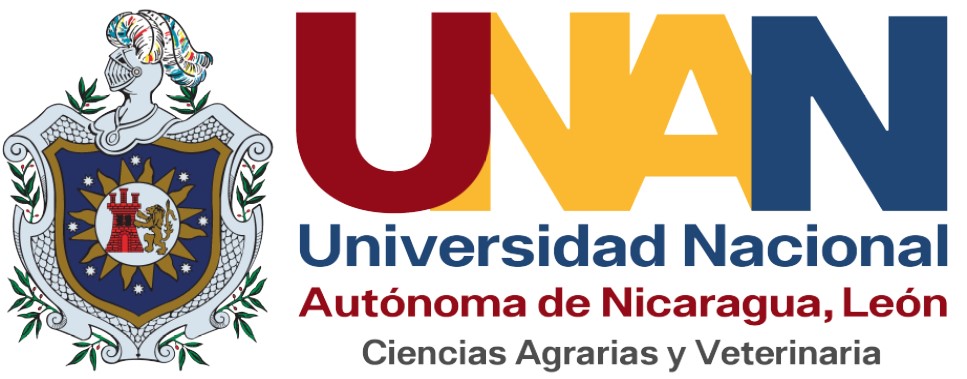Impact models in agriculture considering agriculture scenarios of climate change
DOI:
https://doi.org/10.5377/ribcc.v1i1.2140Keywords:
Climate Change, Analysis models, empirical modelsAbstract
The purpose of this review or compilation of studies carried out in Cuba and Nicaragua is to examine the potential impacts of climate change on the agricultural sector through the use of modeling, in order to provide elements that can be taken into account for the formulation of agricultural and environmental policies since knowing the possible impacts of climate change is a first step towards effective action. The possible impacts of variations in climatic variables on the agricultural sector, on some of the most important crops, are analyzed. Likewise, economic impacts are accounted for through future climate scenarios. The study in the agriculture sector yielded a wide range of results that cover both harmful and beneficial consequences, depending on whether the levels of the CO2 fertilization effect (estimated in laboratories) are achieved in practice for the photosynthetic cycle plants. C3.Downloads
Metrics
References
Adams Richard, Hurd B. Reailly J. (1999), "A review of impacts to U.S. agricultural resources", prepared for the Pew Center on Global Climate Change. Amador, Martín (2000), "Evaluación del posible cambio climático sobre el rendimiento potencial del cultivo de la soya en la región central", Trabajo de Diploma, Universidad Nacional Agraria, Managua.
Baker, B. B. y otros (1993), "The potential effects of climate change on ecosystem processes and cattle production on US Rangelands", Climatic Change, 23: 97-117. Banco Central de Nicaragua (2009), Indicadores económicos mensuales, junio.
https://doi.org/10.1007/BF01661200
Canales R. y M. Cervantes (2008), Nicaragua: Análisis del Impacto de los Servicios de Infraestructura y las Condiciones de Vida en las Zonas Rurales. Proyecto de Cooperación CEPAL/BID/IFPRI. CEPAL (Comisión Económica para América Latina y el Caribe) (2009), Anuario Estadístico de América Latina y el Caribe, 2008.
______ (2009), Balance preliminar de las economías de América Latina y el Caribe, 2008.
______ (2009), Preliminary overview of the Caribbean, 2008-2009(LC/CAR/L.189), marzo.
______ (2009), Anexos Estadísticos, de los Estudio Económicos de Nicaragua.
______ (2008), Economic Survey of the Caribbean, 2007-2008 (LC/CAR/L.173), julio.
Darwin, R., M. Tsigas, J. Lewandrowski y A. Raneses (1995), "World agriculture and climate change. Economic adaptations, Agricultural Economic Report No. 703, Washington: US Department of Agriculture, Economic Research Service, junio. FAO (2003a), World Agriculture: Towards 2015/2030. A FAO Perspective, Roma.
______ (2003b), The digital soil map of the world (DSMW) CD-ROM, Food and Agriculture Organization, Roma. Fleischer, A. I. Lichtman y R. Mendelsohn (2007), "Climate change, irrigation, and Israeli agriculture: Will warming be harmful?", Policy Research Working Paper, No. 4135,
Banco Mundial. Harmeling, Sven (2008), "Global climate risk index 2009 weather-related loss events and their impacts on countries in 2007 and in a long-term comparison", publisher: Germanwatch e.V., diciembre. INEC (Instituto Nacional de Estadística y Censos) (2009), Encuesta de Empleo, Nicaragua. Klinedinst, P. L. y otros (1993), "The potential effects of climate change on summer season dairy cattle milk production and reproduction", Climatic Change, 23(1): 21-36.
https://doi.org/10.1007/BF01092679
MAGFOR (Ministerio Agropecuario y Forestal) (2009), Encuesta Nacional Agropecuaria 2008.
______ (2008), Información estadística anual de producción agropecuaria (Ciclo agrícola 2006/2007 y período pecuario 2008), Nicaragua.
MARENA (Ministerio del Ambiente y los Recursos Naturales), "Evaluación de la Vulnerabilidad Futura de los sistemas: Clima, Socioeconómico y Recursos Hídricos ante el Cambio Climático en la Cuenca No. 64" Proyecto: "Fomento de las Capacidades para la Etapa II de Adaptación al Cambio Climático en Centroamérica, México y Cuba" (PAN 10-00014290), 2007.
______ (2003), Plan de Acción Nacional ante el Cambio Climático, Nicaragua.
______ (2007), Naturalmente Unidos frente al Cambio Climático. Nicaragua.McCarl, B., R. Adams y B. Hurd (2001), Global Climate Change and its Impact on Agriculture, inédito. Mendelsohn, R., W. Nordhaus y D. Shaw (1994), "The impact of global warming on agriculture: A Ricardian analysis", American Economic Review, 84:753-771.
Mendelsohn, R., A. Dinar y A. Sanghi (2001), "The effect of development on the climate sensitivity of agriculture", Environment and Development Economics, 6:85-101. Mendelsohn, R. y S. N. Seo (2007), Changing Farm Types and Irrigation as an Adaptation to Climate Change in Latin American Agriculture. World Bank Policy Research Series Working Paper, No. 4161, Banco Mundial, Washington, D. C.
https://doi.org/10.1596/1813-9450-4161
Molua, E. y C. Lambi (2007), The Economic Impact of Climate Change on Agriculture in Cameroon, World Bank Policy Research Working Paper, No. 4364, Banco Mundial, Washington, D. C.
https://doi.org/10.1596/1813-9450-4364
PNUMA y UNFCCC (2004), Carpeta de Información sobre el cambio climático, octubre. Rivas, Carlos (2000), "Evaluación del posible cambio climático sobre el rendimiento potencial del cultivo del maíz (Zea Mays L.), en la región central de Nicaragua", Trabajo de Diploma, Universidad Nacional Agraria, Managua.
Rivera, Isaac (2000), "Evaluación del posible cambio climático sobre el rendimiento potencial del cultivo del frijol en la región pacífico", Trabajo de Diploma, Universidad Nacional Agraria, Managua.
Schimmelpfennig, D., y otros (1996), Agricultural Adaptation to Climate Change: Issues of Long Run Sustainability, U. S. Department of Agriculture, Natural Resources and Environment Division, Economic Research Service, Washington, D. C.
Seo, S. N. y R. Mendelsohn (2008a), A Ricardian Analysis of the Impact of Climate Change on Latin American Farms, World Bank Policy Research Series Working Paper, No. 4163, Washington, D. C.
https://doi.org/10.1596/1813-9450-4163
______ (2008b), "A Ricardian analysis of the impact of climate change on South American Farms, Chilean Journal of Agricultural Research, 68(1): 69-79.
https://doi.org/10.4067/S0718-58392008000100007
Sergendon Kathleen, B. L. Dixon (1998), "Climate Change and agriculture: The role of farmer adaptation" Chapter 3, the Economics of Climate Change, R. Mendelsohn y J. Neumann, eds., Cambridge University Press, Cambridge.
Verbeek, Marno (2005), "A guide to modern ecoinometrics, Inglaterra, John Wiley & Sons Ltd.
Bouman B.A.M., H. Van Keulen, H.H. van Laar and R. Rabbinge. 1996. The School of de Wit crop growth simulation models: a pedigree and historical overview. Agricultural System, 52(2-3):171-198.
https://doi.org/10.1016/0308-521X(96)00011-X
Cole, C.V., K. Paustian, E.T. Elliot, A.K. Metherell, D.S. Ojiva and W.J. Parton. (1993). Analysis of agroecosystem carbon pools. Water, Air and Soil Polution, 70:357-371.
https://doi.org/10.1007/978-94-011-1982-5_23
Hoogenboom, G. 2000. "The state of the art in crop modeling". In Sivakumar, M.V.K. (Ed.). (2000). Climate Prediction and Agriculture. Proceedings of the START/WMO International Workshop held in Geneva, Switzerland, 27-29 September 1999. Washington DC, USA: International START Secretariat, Pp 69-75.
Hoogenboom, G., P.W. Wilkens, and G.Y. Tsuji [Editors]. (1999). DSSAT v3 Volume 4. University of Hawaii, Honolulu, Hawaii. 286 p.
Jones, C.A., P.T. Dyke, J.R. Williams, J.R. Kiniry, V.W. Benson, and R.H. Griggs. (1991). EPIC: An operational model for evaluation of agricultural sustainability. Agricultural System, 37:341-350.
https://doi.org/10.1016/0308-521X(91)90057-H
Keathing, B.A., G.L. Hammer, P.S. Carberry, D.M. Freebairn, H.M. Meinke and R.L. McCown. (1997). APSIM?s contribution to the simulation of agricultural system. Agronomy Abstracts, (1997):21.
Kropff, M.J., H.H. van Laar and R. Mattheus. (1994). ORYZA1, An ecophysiological model for irrigation rice production. SARP Research Proceedings. DLO Research Institute for Agrobiology and Soil Fertility, Wageningen, The Netherlands. 110 p. McCown, R.L., G.L. Hammer, J.N.G.
Hargreaves, D.P. Holzworth and D.M. Freebairn. (1996). APSIM: a novel software system for model development, model testing and simulation in agricultural systems research. Agricultural System, 50:255-271.
https://doi.org/10.1016/0308-521X(94)00055-V
Meinke, H., G.L. Hammer and R. Selvaraju. (2000). Using seasonal climate forecast in agriculture - the Australian experience. In Sivakumar, M.V.K. (Ed.). 2000. Climate Prediction and Agriculture. Proceedings of the START/WMO International Workshop held in Geneva, Switzerland, 27-29 September 1999. Washington DC, USA: International START Secretariat, Pp 195-213.
Penning de Vries, F.W.T., D.M. Jansen, H.F.M. ten Berge and A. Bakema. (1989). Simulation of ecophysiological processes of growth of several annual crops. Simulation Monographs. Centre for Agricultural Publishing and Documentation (Pudos). Wageningen, The Netherlands.
Tsuji, G.Y., G. Hoogenboom and P.K. Thornton (Ed). (1998). Underestanding options for agricultural production. Kluwer, Dordrecht, The Netherlands.
Downloads
Published
How to Cite
License
Copyright (c) 2015 Revista Iberoamericana de Bioeconomía y Cambio Climático

This work is licensed under a Creative Commons Attribution-NonCommercial-ShareAlike 4.0 International License.
Copyright © 2025 Rev. iberoam. bioecon. climate change. National Autonomous University of Nicaragua León (UNAN-León), Knowledge Area of Agrarian and Veterinary Sciences / Specific Area of Agroecology and Agribusiness / Center for Research in Agrarian Sciencies. Academic Directorate. Research Department. Publication and scientific events Unit.












 EDITORIAL
EDITORIAL e-ISSN
e-ISSN


 COPYRIGHT
COPYRIGHT This work is licensed under a Licencia Internacional
This work is licensed under a Licencia Internacional 












